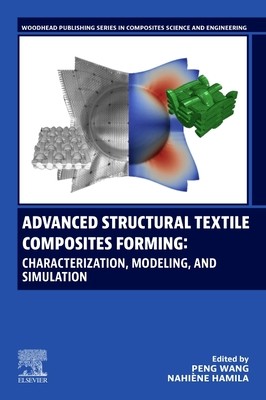
- We will send in 10–14 business days.
- Publisher: Woodhead Publishing
- ISBN-10: 0443215782
- ISBN-13: 9780443215780
- Format: 15.2 x 22.9 x 3.4 cm, minkšti viršeliai
- Language: English
- SAVE -10% with code: EXTRA
Advanced Textile Structural Composites Forming (e-book) (used book) | bookbook.eu
Reviews
Description
Advanced Textile Structural Composites Forming: Characterisation, modelling, and simulation comprehensively describes the influence of fibre/fabric architectures and properties on composites forming, along with their deformability and structural optimization, covering the latest advances in the composites forming field. Part one reviews textile reinforcement architectures and discusses the forming behaviours of important 2D and 3D fabrics. Part two discusses numerical models to conduct simulation analysis of different structural composites forming at mesoscopic and macroscopic scales, in particular, 3D preforms with through-the-thickness yarns. Part three looks at the latest developments in the relationship between forming and other steps in composite manufacturing, such as resin injection, and automated fibre placement (AFP) and the effects on certain mechanical properties, such as structural damage and impact resistance. The international team of experts assembled shows how the structure and mechanics of different textile reinforcements affect the forming of textile composites and their relationship to the mechanical properties of the final composite part. The book will be an essential reference for academic researchers, industrial engineers and materials scientists working with the manufacture and design of fibre-reinforced composite materials.
EXTRA 10 % discount with code: EXTRA
The promotion ends in 23d.09:10:51
The discount code is valid when purchasing from 10 €. Discounts do not stack.
- Publisher: Woodhead Publishing
- ISBN-10: 0443215782
- ISBN-13: 9780443215780
- Format: 15.2 x 22.9 x 3.4 cm, minkšti viršeliai
- Language: English English
Advanced Textile Structural Composites Forming: Characterisation, modelling, and simulation comprehensively describes the influence of fibre/fabric architectures and properties on composites forming, along with their deformability and structural optimization, covering the latest advances in the composites forming field. Part one reviews textile reinforcement architectures and discusses the forming behaviours of important 2D and 3D fabrics. Part two discusses numerical models to conduct simulation analysis of different structural composites forming at mesoscopic and macroscopic scales, in particular, 3D preforms with through-the-thickness yarns. Part three looks at the latest developments in the relationship between forming and other steps in composite manufacturing, such as resin injection, and automated fibre placement (AFP) and the effects on certain mechanical properties, such as structural damage and impact resistance. The international team of experts assembled shows how the structure and mechanics of different textile reinforcements affect the forming of textile composites and their relationship to the mechanical properties of the final composite part. The book will be an essential reference for academic researchers, industrial engineers and materials scientists working with the manufacture and design of fibre-reinforced composite materials.


Reviews